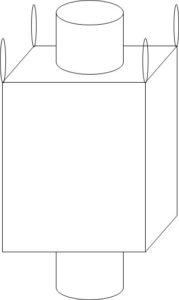| Bulk product in FIBC | Surrounding | ||
|---|---|---|---|
| MIE of dust | Non-flammable atmosphere | Dust zones 21-22 (1000 mJ ≥ MIE > 3 mJ) |
Gas zones 1-2 (Groups IIA/IIB) or Dust zones 21-22 (MIE ≤ 3mJ) |
| MIE > 1000 mJ | A, B, C, D | B, C, D | C, D |
| 1000 mJ ≥ MIE > 3 mJ | B, C, D | B, C, D | C, D |
| MIE ≤ 3 mJ | C, D | C, D | C, D |
Scroll or view in landscape mode to see full table.
Note: There is no official standard classification, “Groundable Type D”, D+, Dplus or CD. IEC 61340-4-4 Ed. 2.0 & Ed. 3.0 do not permit FIBC to be labelled as D+, CD, etc. Only the official classifications, i.e. Type A, Type B, Type C or Type D can be indicated on FIBC labels. One FIBC cannot be simultaneously classed as more than one type. So, for example, classing FIBC as both Type C and Type D, or labelling as C/D, etc. is not permitted by IEC 61340-4-4 Ed. 2.0 or Ed. 3.0.



